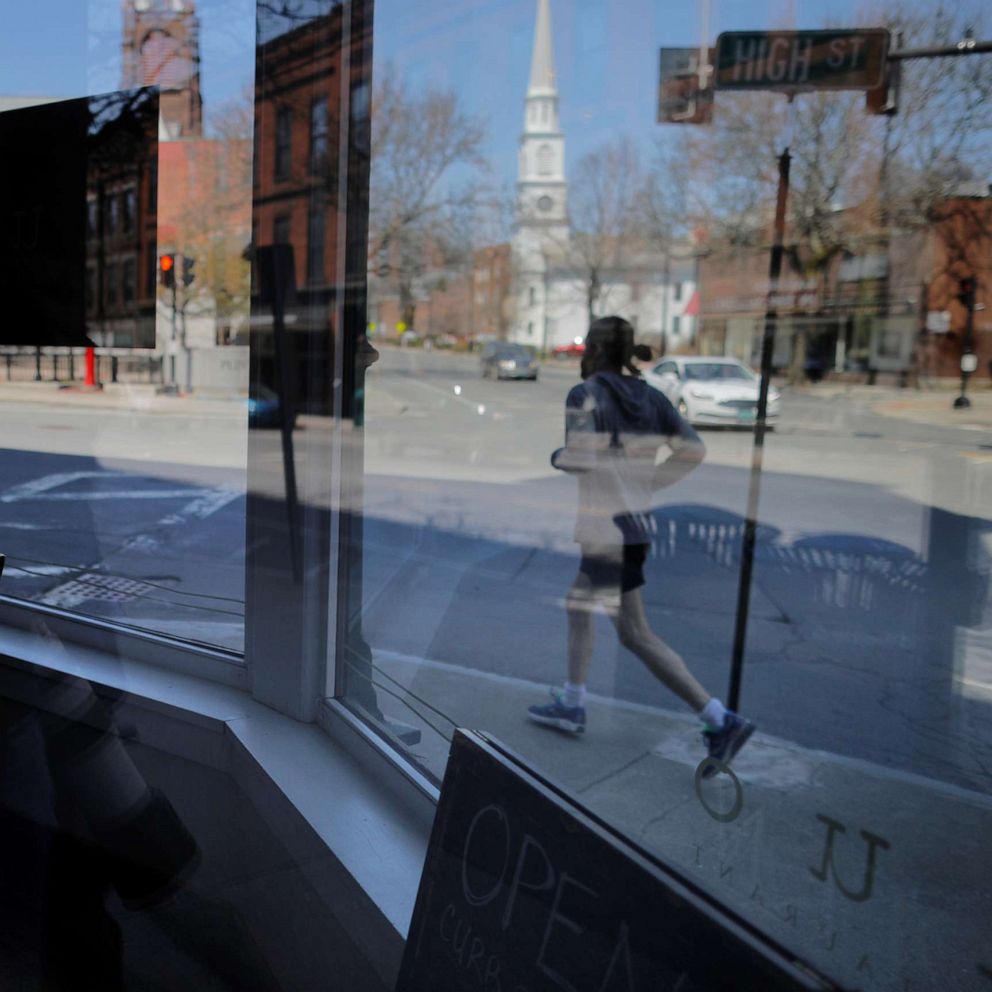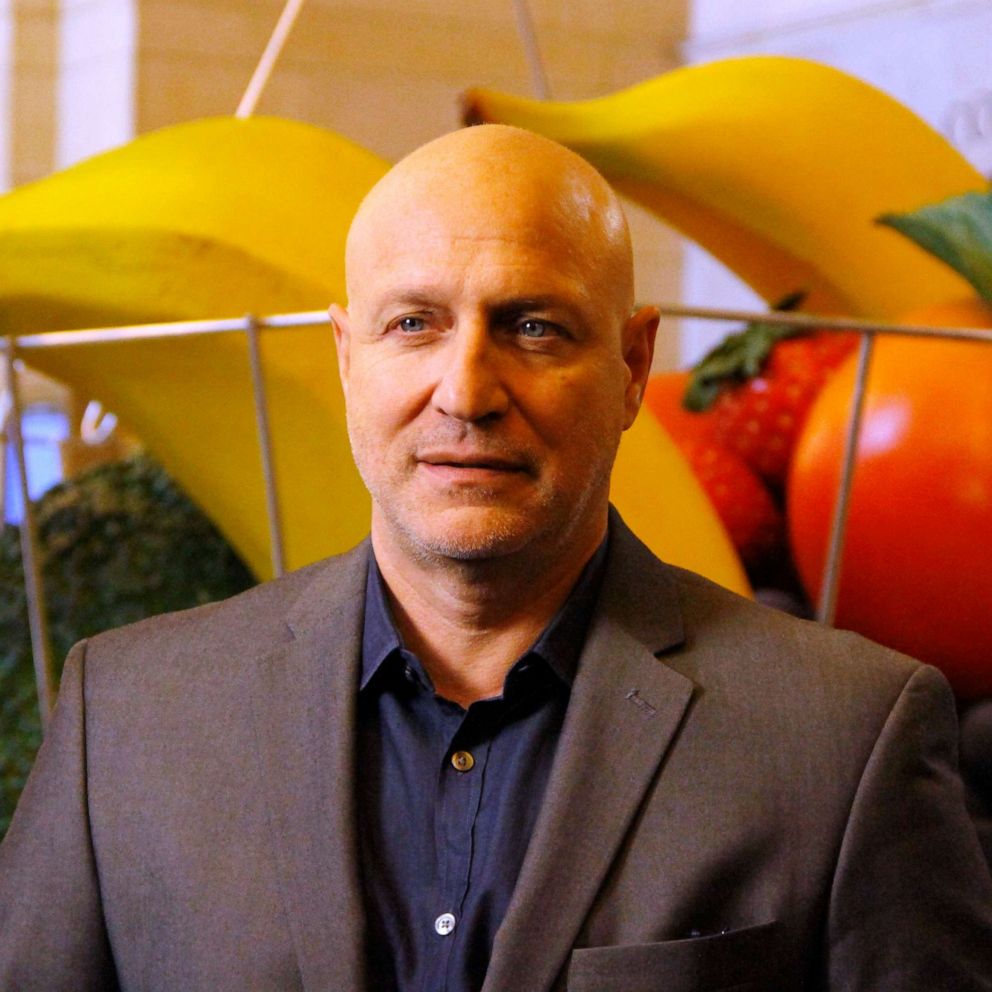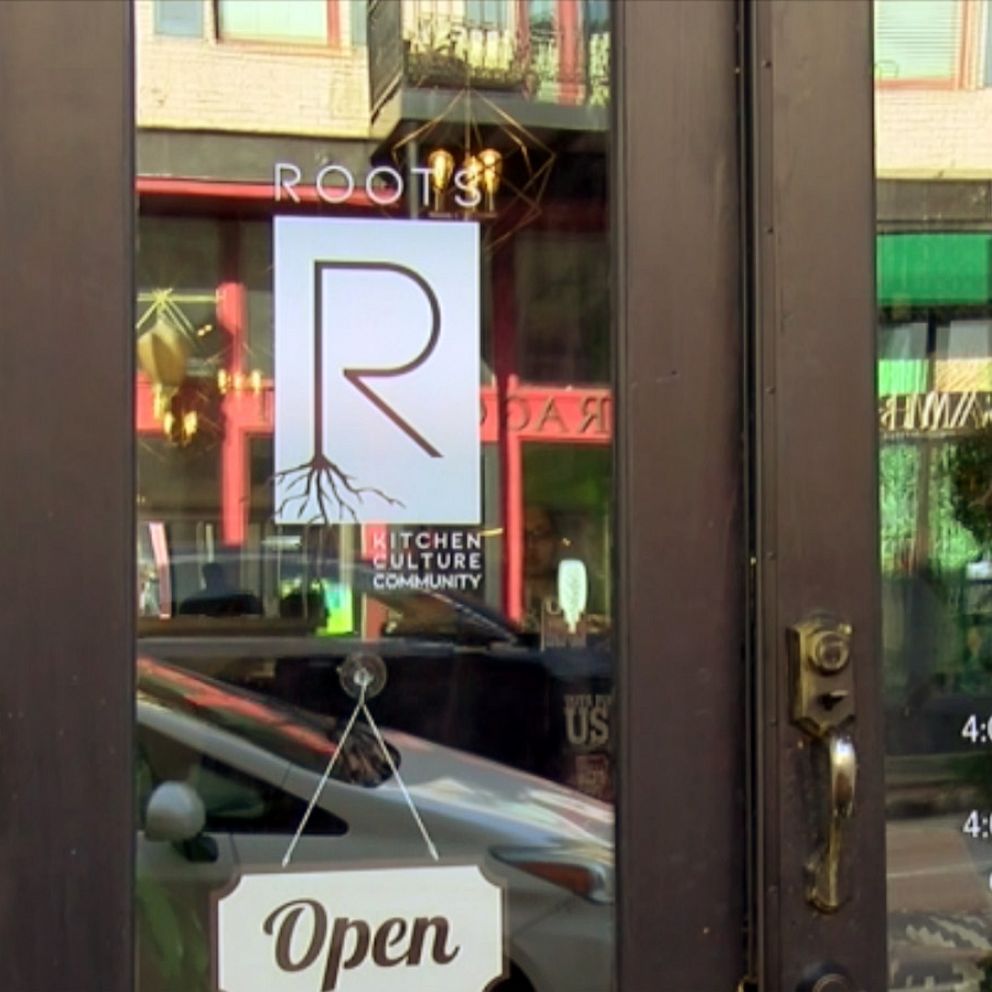Prospect of reopening amid COVID-19 crisis has some restaurateurs balking
Before COVID-19, US restaurants were on pace to make $881 billion in 2020 sales.
Heading into one of his three restaurants in suburban Atlanta, Ryan Pernice ticked off a list of concerns running through his head. Only a few had to do with feeding customers who, until recently, packed his dining rooms.
“On a busy summer Saturday night, it wasn’t uncommon to do about 250 people," he told ABC News of the brisk business at his largest restaurant, the 3,400-square-foot Osteria Mattone in Roswell, Georgia.
Instead of being preoccupied with ordering seasonal vegetables for the Southern dishes served in the homey confines of his Table & Main, also in Roswell, or finding ingredients for the short rib ravioli at Osteria Mattone, Pernice says he's been scouring the open market for masks, gloves and hand sanitizer, and rejiggering floor plans to do what most savvy restaurateurs would normally consider illogical: creating more space for fewer people.
But these are no longer normal times, particularly for the hard-hit restaurant industry that, according to the National Restaurant Association, was projected to ring up a record $881 billion in sales by the end of 2020. The estimations, of course, were made before the novel coronavirus pandemic swept the world, and a favorite U.S. pastime of going out to eat vanished in a wash of coronavirus stay-at-home orders imposed across the country.
“If there wasn't a world-ravaging virus on the loose, this would actually be kind of fun because every day is just about entrepreneurship," Pernice said.
As the latest data shows, the rate of deaths, new infections and hospitalizations appear to be slowing in some parts of the country and most states are making plans on how to restart their economies, leaving restaurant owners, in particular, with a tough choice: Open at the risk of a resurgence of the invisible contagion formally known as COVID-19, or wait until the scientists reach a consensus that it's safe.
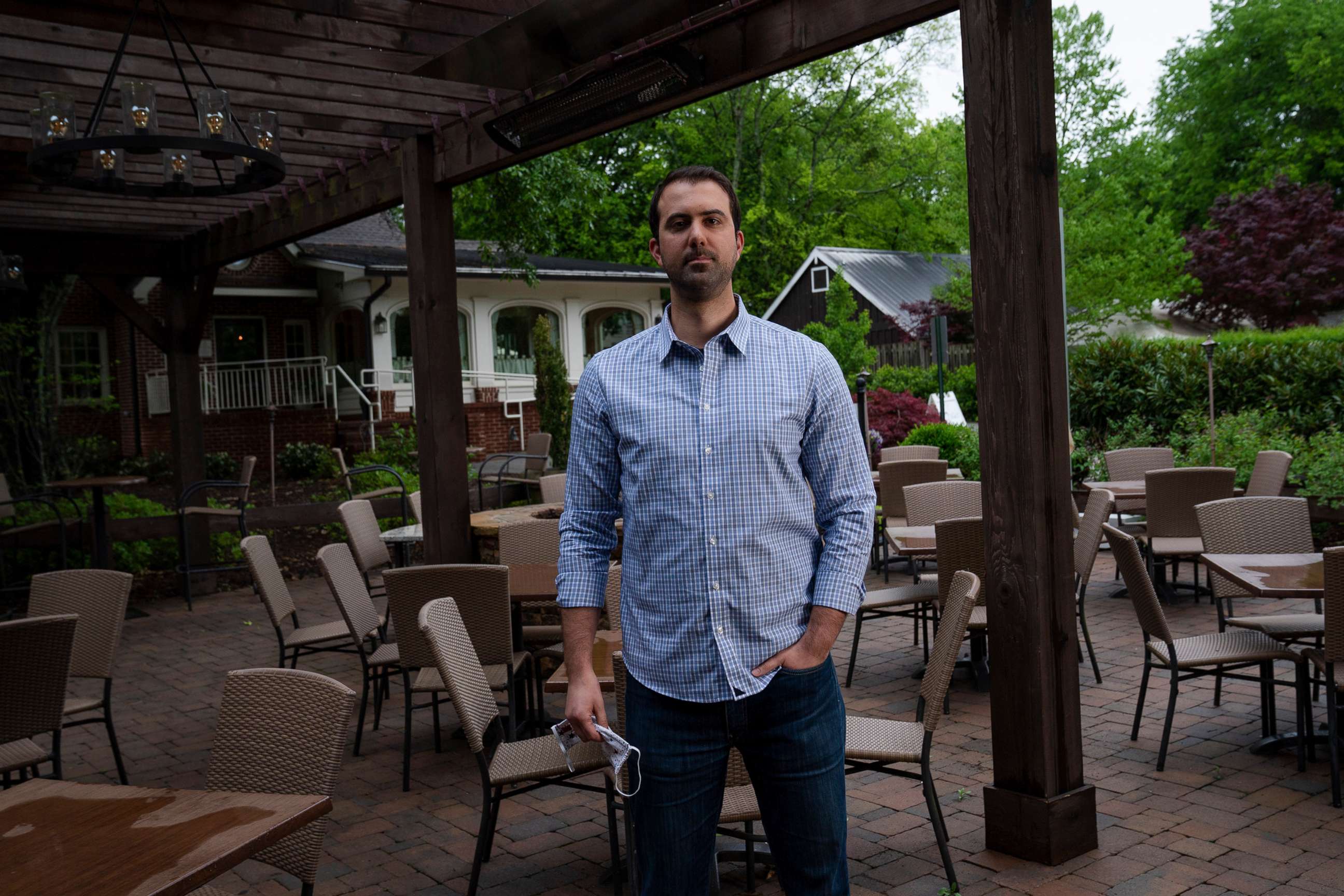
Georgia Gov. Brian Kemp has given restaurateurs the green light to reopen doors with the caveat of 39 virus-prompted guidelines, including limiting restaurants to 10 customers for every 500 square feet of dining space.
Pernice, however, is not rushing to take reservations.
"We don’t feel that we’re at the point where we can safely open, buy all the PPE (personal protective equipment) we need, make all the operational changes and make all the building-level changes in order to confidently welcome back our guests and our staff this soon," Pernice said.
In his list of guidelines, Kemp paints a picture of what dining out will look like for patrons and proprietors for the time being in his state and possibly elsewhere. In addition to the diners-per-square-feet restrictions, waitstaff will wear masks and gloves, and pass out disposable menus and hand sanitizer. Signs will be posted warning anyone who appears sick or feverish will be barred at the door. Parties will be limited to six per thoroughly-sanitized table and salad bars, buffets, self-serve drink stations will be forbidden. Reservations are recommended and bars and other waiting areas will be roped off to avoid people congregating. Diners will not be required to wear masks but some establishments could require them.
Even pay options will be restricted under Kemp's guidelines to contactless methods, such as smartphones, fobs and other tap-to-pay and mobile devices.
This new reality in Georgia, one of the earliest states to start reopening, presents a conundrum for owners in the state and elsewhere -- open up and potentially make less money, but expose staff and patrons to a potentially deadly virus or stay closed and risk shutting down for good.
In addition to questions about safety, liability and logistics (such as how much emphasis to place on takeout, a lifeline for many during the pandemic), restaurateurs are grappling with the ultimate puzzle -- will people come back and whether they'll be willing to pay for the new experience. For a restaurant industry built on volume and in some cases cramming guests into small spaces, particularly those in cities with high rents, the challenges are particularly acute.
Restaurants opting to stay closed
Pernice and 49 other restaurateurs, who operate 129 dining establishments in the metro Atlanta area, took out a full-page ad last week in the Atlanta Journal-Constitution newspaper to send Kemp a message, they said, that opening amidst a global pandemic is not a good idea.
“We agree that it’s in the best interest of our employees, our guests, our community, and our industry to keep our dining rooms closed at this time,” reads the ad paid for by the restaurant consortium calling itself #GAHospitaliity Together.
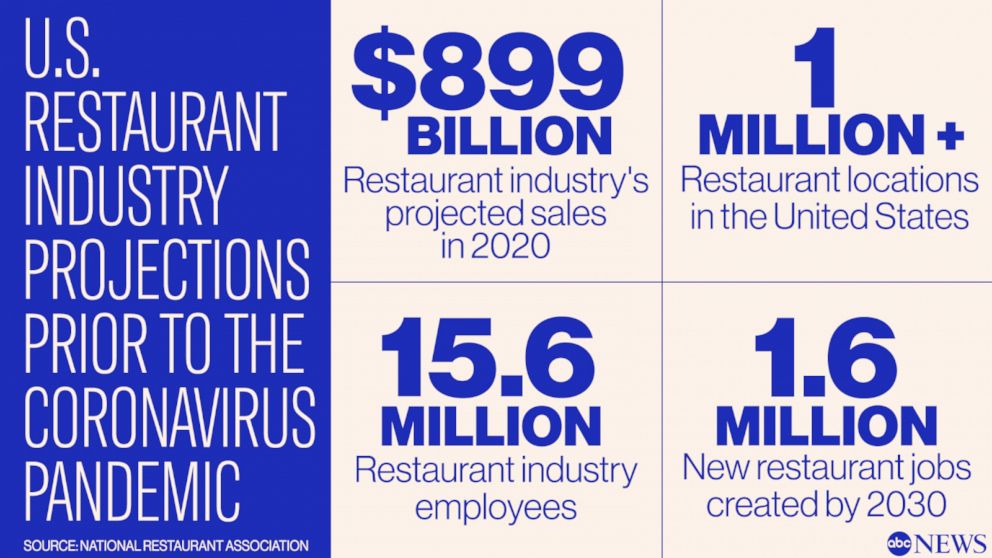
Linton Hopkins, the winner of the 2012 James Beard Award for Best Chef in America, was one of the restaurant owners who signed the advertisement. Linton, who with his wife, Gina Hopkins, owns the Hopkins & Co. restaurant group in Atlanta, also took to Twitter to expound on the #GAHospitality Together message.
"My fellow Atlantans, please do not mistake our @GovKemp’s allowance of these businesses to reopen as justification for gathering at these businesses," Linton wrote. "The data shows we are not close to being through this. The death toll will rise because of this." He ended the tweet, writing, "#prayer."
According to the Georgia Department of Health, more than 29,400 people in the state have tested positive for the coronavirus, more than 5,500 virus patients remain hospitalized, and 1,246 have died. Between Friday and Monday, the number of confirmed cases in the state rose by 3,268, while deaths increased by 145. Fulton County, which includes Atlanta, has accounted for more than 3,000 of the confirmed cases and 129 of the deaths.
'Our customers are ready to see some sign of progress'
Other restaurant owners, including the 1,969-restaurant Waffle House chain, jumped at the chance to get cooking again.
During a White House meeting on Wednesday with President Donald Trump and some of the nation's top executives from a cross-section of industries, Waffle House CEO Walt Ehmer said the first goal of reopening the chain's restaurants in Georgia, which according to the company's website number 442, is providing a "safe environment for our customers and our associates."
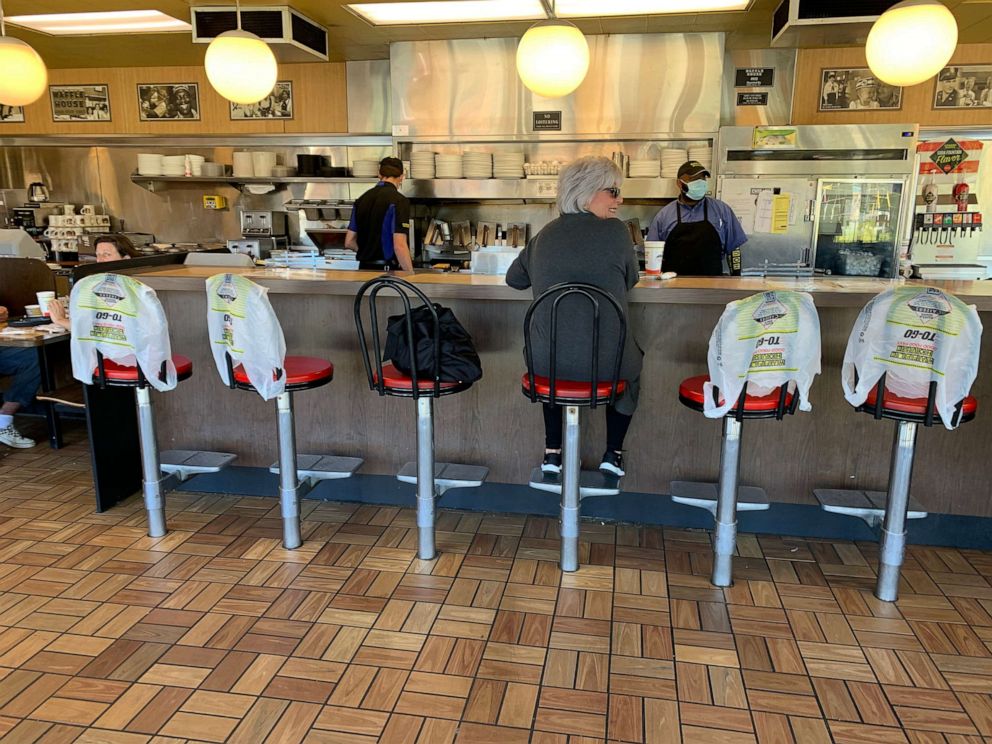
"Our customers are ready to see some sign of progress that we are beginning to move forward," Ehmer said.
He said the eateries will operate at half capacity and follow Kemp's guidelines, as well as any put out by the Centers for Disease Control and Prevention (CDC).
A draft of the guidance the CDC sent to the White House that was obtained by the Associated Press, is similar to Kemp's suggestions and adds that restaurants should consider providing single-service condiments, disposable utensils and dishes and install sneeze guards at cash registers.
“Restaurants have a unique opportunity to help lead us out of this and the reason for that, in my opinion, is that we have been practicing safe food handling for years," Ehmer said at the White House meeting. "The safety of our guests has always been paramount. So, what we have done is we’ve taken a workforce that is trained to do that and added more sanitation practices to it."
In addition to Georgia, the governors of West Virginia, Tennessee, Texas and Florida have also allowed restaurants to reopen with tough safety requirements and severe limits on dining capacity.
Some restaurant owners like Matt Brice, of Houston, decided to reopen even before getting the OK to do so from the government.
Brice said reservations to eat at his Federal American Grill in Houston were filled up as soon as he announced he was reopening last week, days ahead of Gov. Greg Abbott's decision to allow restaurants, malls, retail stores and movie theaters to reopen on Friday with capacity capped at 25% of normal.
"There has to be a point in time the bleeding from the restaurant needs to stop. These guys (employees) have to get back to work, but safely," Brice told ABC station KTRK-TV in Houston.
For other states, like hard-hit New York, restaurants won't open until phase 3 of Gov. Andrew Cuomo's plan. California is also holding off allowing restaurant dining rooms to reopen.
Math doesn't add up
Pernice said he's done the "Plinko math" and concluded that things don't add up, not only in terms of safety but economically, as well.
"So in a restaurant like (1,800-square-foot) Table & Main with 52 seats inside, I may be lucky, given the spacing measurement requirements, if I could fit 20," Pernice said. "All the health and wellness stuff aside, of course, that’s the most important thing, but can this restaurant make money with 20 seats in it? And the answer is, ‘Well, maybe not.' And then afterward it's, 'Well, what do you do?"
He also said the issue of liability weighed heavily in his decision to stay closed.
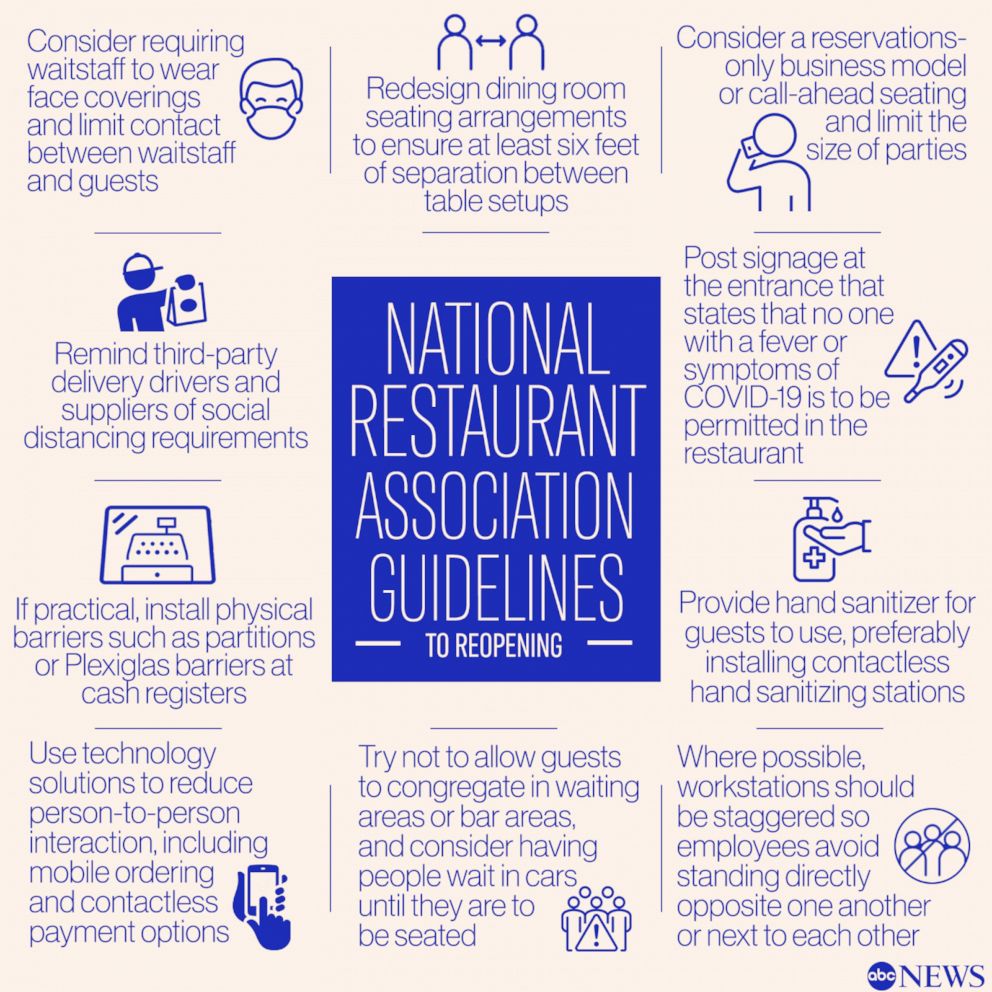
"If someone comes to me and says, ‘I got COVID in your restaurant’ can you really say that? This is a disease that apparently can be passed on from person to person without any symptoms at all. You can get this thing from touching a door handle. So how are we going to do that?" Pernice told ABC News. "If we agree that the staff needs to wear masks, we must then agree that there’s some level of danger to not wearing a mask. And if my staff has to wear it, well how come the guests don’t have to wear it? Don’t I have an even higher obligation to my staff, to protect them from you people?"
As COVID-19 began to erupt in March in the United States, city and state government leaders nationwide ordered all restaurants and bars closed.
While many establishments retained skeleton crews to continue takeout service, the bulk of the 11 million to 15.6 million restaurant workers nationwide were left unemployed. Data from the U.S. Bureau of Labor Statistics show that 60% of unemployment applicants had been laid off from the leisure and hospitality industry, mainly in food service and drinking places.
Pernice said he's had to lay off 80 of the 120 workers at his three restaurants, Table & Main and Osteria Mattone in Roswell, Georgia, and Coalition Food and Beverage in nearby Alpharetta. He kept on some workers to handle takeout orders and staff a soup kitchen at Table & Main.
“It’s a lot of folks who either were food insecure before this or are now newly food insecure and that’s typically who we’re serving," said Pernice, adding that his crew has prepared and handed out more than 5,000 meals since his restaurants shut down in mid-March.
'Backbone of many communities all across America'
The $881 billion sales projections for the industry have been turned upside down and become the reason for a group of independent restaurant owners to plead with Congress to create a $120 billion stabilization fund to keep restaurants afloat.
"I don't think we realize how restaurants are the backbone of many communities all across America," Jose Andres, famed restaurateur and founder of the emergency food-relief nonprofit World Central Kitchen, said during a Zoom news conference last week with other members of the group calling itself the Independent Restaurant Coalition (IRC).
In a letter to bipartisan members of Congress, the IRC wrote, "We need Congress to act or we will not be able to survive. Small restaurants are scrappy and entrepreneurial; we run on thin margins and optimism. We are the places you meet your constituents, we are the places that donate to schools, we are the places feeding our frontline workers today. If these requirements are not met, our country will not only permanently lose 11 million jobs, but also these vital cornerstones of our communities."
Will patrons feel safe again?
The 500,000-member National Restaurant Association has also developed its own list of guidelines to help restaurants reopen when they are ready to. Many of the suggestions mirror those Kemp and other governors have mandated for restaurants to reopen.
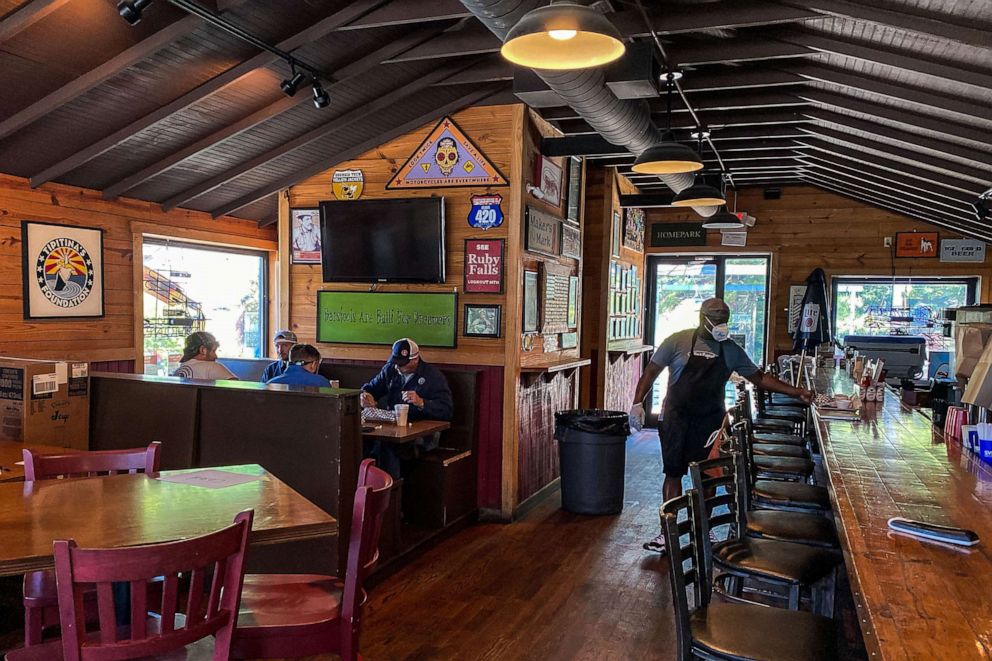
“We’ve been a little bit at an advantage coming out of the restaurant side of the world because the restaurants for the longest time have been heavily regulated by the Food and Drug Administration's food code. The FDA’s food code has been around for decades," Larry Lynch, vice president of certification and operations for the National Restaurant Association, told ABC News, echoing statements Ehmer of Waffle House made at the White House.
Lynch said nearly 80% of what restaurants are addressing as the result of COVID-19 is already in the food code.
"So what we looked at was what else are we looking to do here, what is the CDC and FDA suggesting? A lot of it came down to enhanced sanitation, covering more areas than you would typically cover, making sure that the sanitation materials that you use are EPA approved against COVID-19."
Despite all the safety precautions, Lynch said one of the biggest obstacles facing restaurateurs will be convincing patrons to feel safe about dining out again.
“I would say that’s every restaurateur’s concern at the moment," Lynch said. "I think they know what to do to make the restaurants safe. They've been doing that for years. Now they’re just building on that."
ABC News' Trish Turner contributed to this report.
What to know about the coronavirus:
- How it started and how to protect yourself: Coronavirus explained
- What to do if you have symptoms: Coronavirus symptoms
- Tracking the spread in the U.S. and worldwide: Coronavirus map
Tune into ABC at 1 p.m. ET and ABC News Live at 4 p.m. ET every weekday for special coverage of the novel coronavirus with the full ABC News team, including the latest news, context and analysis.
